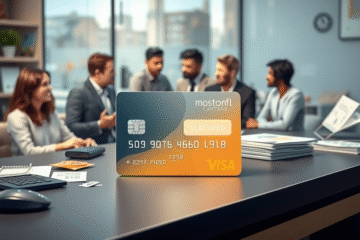Credit Card With Emergency ATM Withdrawal Access
Emergency Withdrawal is an essential feature of credit cards that can provide quick access to cash during unforeseen circumstances.
Get the credit you need today!
Start your financial journey now!
In this article, we will explore how to effectively use your credit card for cash advances at ATMs, including the necessary steps to execute the withdrawal.
Additionally, we will delve into the associated fees and interest rates, helping you understand when it is appropriate to rely on this option in times of need.
By the end of this piece, you will be well-informed about managing emergencies with your credit card responsibly.
Using Your Credit Card for Emergency Cash at ATMs
Accessing emergency cash with a credit card at ATMs can be a lifesaver in urgent situations when you find yourself in need of funds.
Understanding the mechanics of executing a cash advance, including entering your PIN and selecting the withdrawal option, is essential to navigate this process smoothly.
However, it’s important to be aware of the potential risks, such as high fees and interest rates, which make it crucial to use this option sparingly and only when absolutely necessary.
Step-by-Step Withdrawal Guide
Step 1: Locate a nearby ATM that supports credit card transactions.
This can generally be determined by a visible network logo like Visa or Mastercard.
Step 2: Ensure you have your credit card and PIN ready for use.
Never share your PIN.
Step 3: Insert your credit card into the ATM, following the prompts on the screen.
Step 4: Enter your PIN to gain access to your account.
Step 5: Select the cash withdrawal or cash advance option from the menu.
Note that fees and high interest rates may apply, so check the on-screen fee before proceeding.
Step 6: Enter the amount you wish to withdraw, ensuring it is within your cash advance limit.
Step 7: Confirm the withdrawal request and wait for the ATM to dispense your cash.
Step 8: Make sure to take your receipt for keeping a record.
Always retrieve your card before leaving the ATM.
For a more detailed guide, consider visiting the Wise ATM withdrawal guide.
Fees and Interest Explained
Credit-card cash advances at ATMs carry several costs, starting with the cash advance fee, which is typically 3%–5% of the withdrawn amount, and is added immediately.
The APR for cash advances is notably higher than for regular purchases and incurs from the transaction date, lacking any grace period.
To minimize these costs, repay the advance swiftly as interest doesn’t halt until payment made.
Understand these terms further at Chase Cash Advance APR Details.
Fee Type Typical Percentage Accrual Method Cash advance fee 3%–5% Added immediately Cash advance APR 20%–30% Starts from transaction date
When It Makes Sense to Withdraw
In emergency situations, using a credit card for ATM cash withdrawal can be a lifeline when other options fail.
These scenarios might include urgent travel needs or sudden expenses where immediate cash access is crucial.
Cash advances offer quick liquidity but come with significant cost considerations, including fees and higher interest rates.
It’s vital to weigh these against the urgency of your situation.
Explore alternatives like borrowing from friends to mitigate high fees.
Consider accelerated repayment plans to minimize interest.
- Medical copay when clinics accept only cash
- Unexpected travel for family emergencies
- Home repairs critical to safety
- Sudden car breakdowns
Frequent Pitfalls and Safe Practices
When executing an emergency ATM withdrawal using a credit card, users frequently make mistakes, such as ignoring daily withdrawal limits, leading to declined transactions and frustration.
This oversight can exacerbate an already stressful situation.
Another common pitfall involves not understanding the fees associated with cash advances.
This includes high upfront fees for accessing cash and elevated interest rates, often starting on the day of withdrawal.
It’s important to remain aware of these costs to avoid inflating the financial burden in an emergency.
Safety during ATM transactions is critical.
People often neglect basic security measures like shielding the keypad while entering their PIN.
This omission can lead to fraudulent activities, especially if card skimmers are in place.
According to an article on ATM safety tips, being vigilant about your surroundings and checking for tampering at the ATM can greatly reduce the risk of theft.
- Repay the advance as soon as possible to reduce interest
- Familiarize yourself with transaction fees to better manage costs
- Always review your bank statements for unauthorized activities
- Plan to withdraw in well-lit and secure locations
- Consider alternative emergency funds to minimize reliance on cash advances
Emergency Withdrawal options can be a lifesaver, but it’s crucial to use them wisely.
Be aware of the fees and interest associated with cash advances to avoid financial strain in the future.



0 Comments